Cisco CCNP ROUTE Connecting an Enterprise Network to ISP Networks
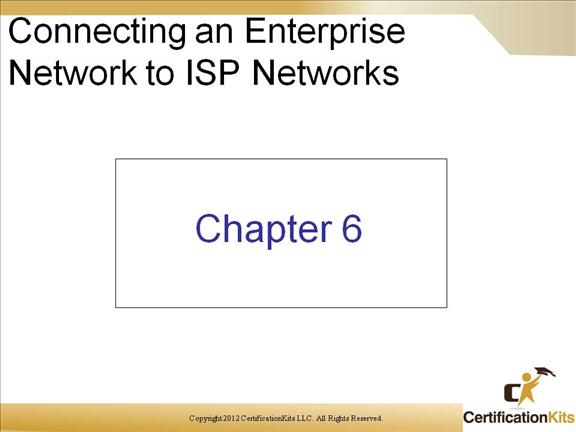
Cisco CCNP ROUTE Session Origin Initiation
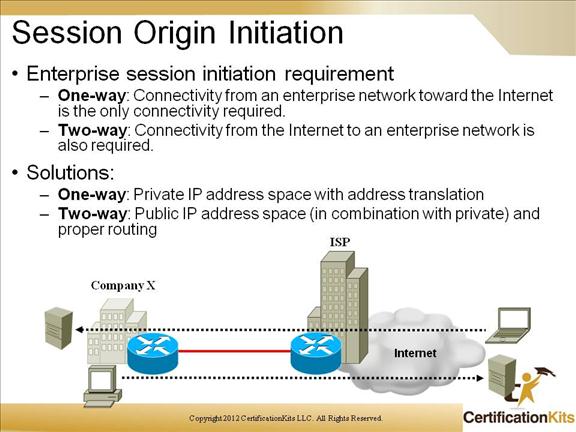
Today, corporations cannot survive without being connected to the Internet. They provide many services via the Internet to their customers and business partners.
In cases where internal hosts need access to the Internet, NAT can be utilized in an overload fashion where all internal hosts are seen externally as the same IP Address.
For cases where internal resources need to be accessed from the Internet, a one-to-one static NAT mapping is required.
Cisco CCNP ROUTE Reachability
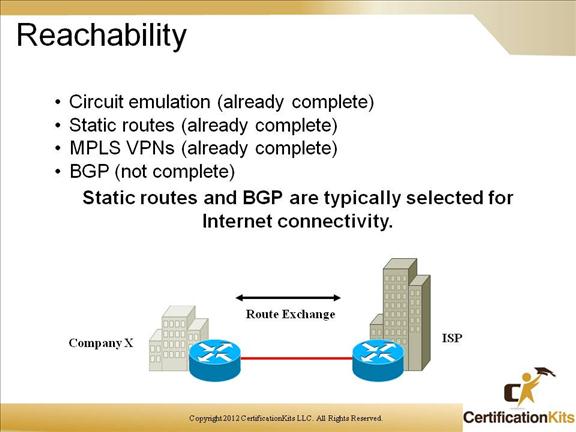
BGP is the typical routing protocol utilized for Internet connectivity. Depending on the size of your network and how you interface to your ISP(s), you might configure BGP on your external router facing the Internet or you may use static routes.
Cisco CCNP ROUTE Using Circuit Emulation
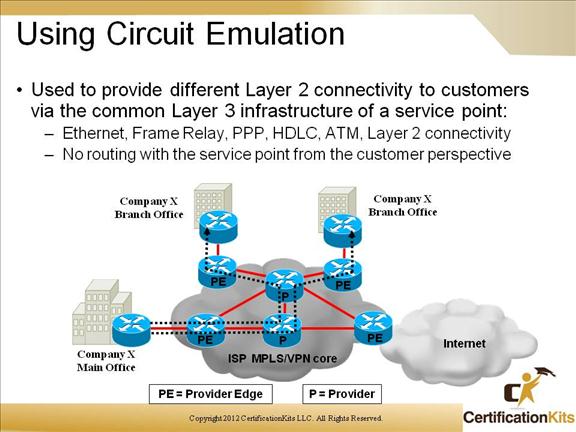
Some different layer 2 connectivity options are as follows:
– Ethernet
– Frame Relay
– PPP
– HDLC
– ATM
Cisco CCNP ROUTE Using Static Routes
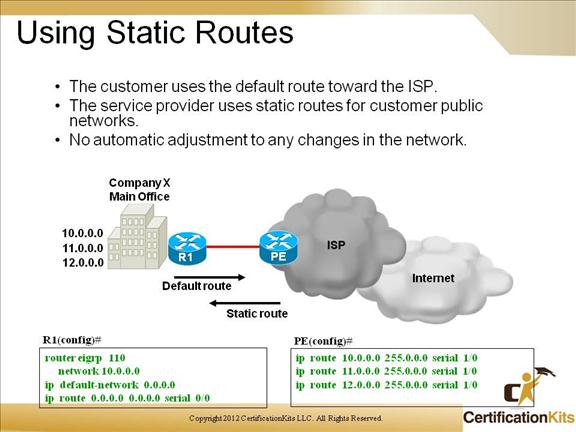
Using static routes when connecting to the Internet is just that STATIC. There is no automatic adjustment to account for outages.
Cisco CCNP ROUTE Using MPLS VPN
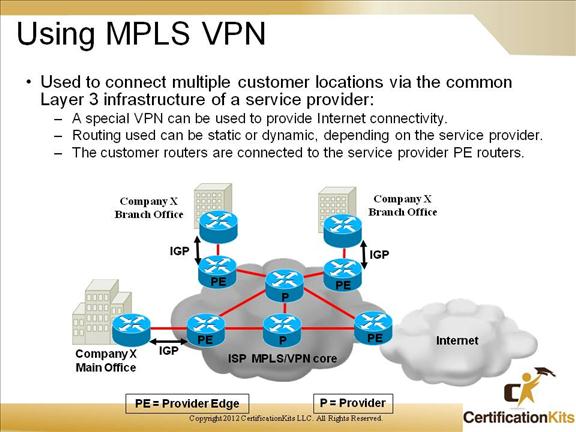
Multiprotocol Label Switching (MPLS) is very common in WANs today. MPLS is a mechanism in high-performance telecommunications networks which directs and carries data from one network node to the next with the help of labels. MPLS makes it easy to create “virtual links” between distant nodes. It can encapsulate packets of various network protocols. MPLS is a highly scalable, protocol agnostic, data-carrying mechanism.
Cisco CCNP ROUTE Using BGP
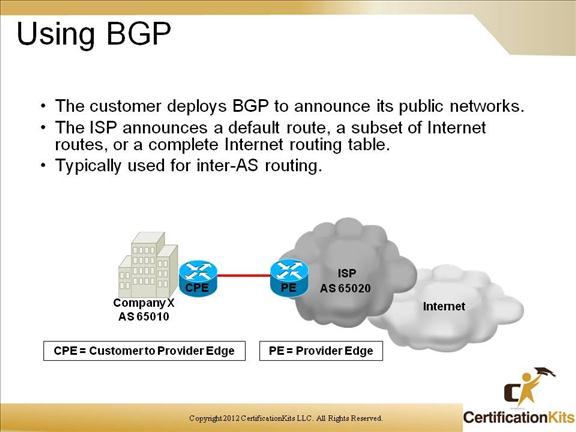
Border Gateway Protocol (BGP) is the protocol backing the core routing decisions on the Internet. It maintains a table of IP networks or ‘prefixes’ which designate network reachability among autonomous systems (AS). It is described as a path vector protocol.
Cisco CCNP ROUTE Enterprise Network-to-ISP Connection Options
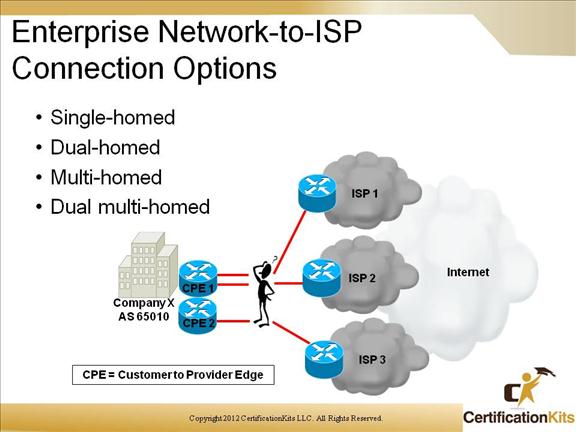
Different options that can be used when connecting to ISP(s) are:
– Single-homed
– Dual-homed
– Multi-homed
– Dual multi-homed
Cisco CCNP ROUTE Single-Homed ISP Connectivity
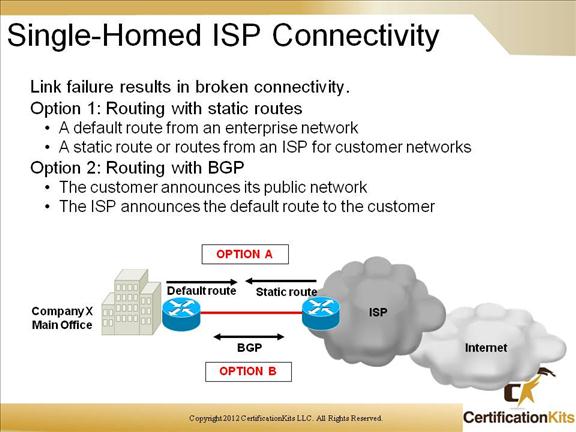
Single-homed ISP connectivity is used when connectivity to the Internet is not critical. Single-homed ISP connectivity is prone to outages.
BGP is not required for single-homed ISP connectivity, instead, static routes are typically used.
Cisco CCNP ROUTE Dual-Homed ISP Connectivity
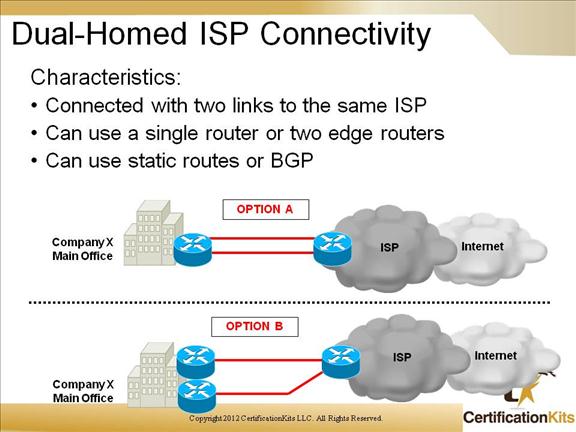
When a corporation is connected to a single ISP, resiliency can still be achieved by configuring as shown in Option B where there are two external links to the same ISP.
Depending on the SLA with the ISP, routing could achieve the following benefits:
- • Primary and backup link
- • Load sharing between the two links
Cisco CCNP ROUTE Multi-homed ISP Connectivity
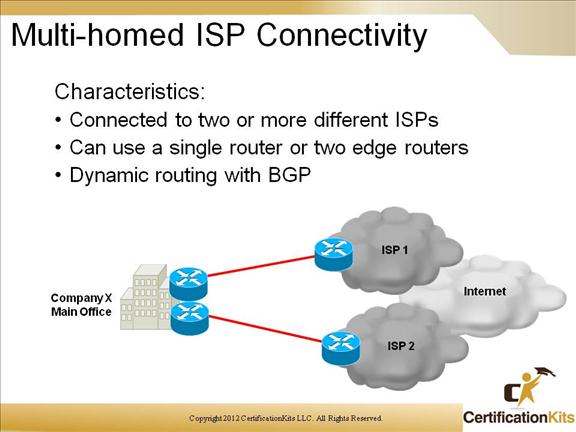
The best way to provide redundancy / resiliency is to connect to two or more different ISPs as depicted in the slide above. Benefits are as follows:
- • Persistent connectivity in the event of an ISP failure
- • Load sharing amongst the ISPs
- • Scaling beyond two ISPs
- • Solution can be independent of ISP
Cisco CCNP ROUTE Dual-Multi-homed ISP Connectivity
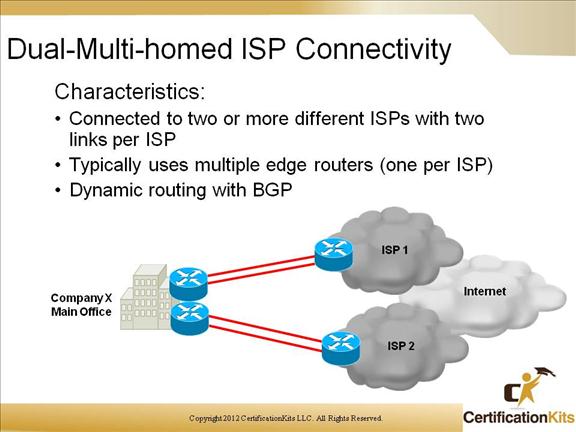
Multi-homing exists when an organization has more than one connection to the Internet. This is typically done for the following reasons:
- • Increase reliability of the Internet connection
- • Increase network performance
Cisco CCNP ROUTE BGP Terminology
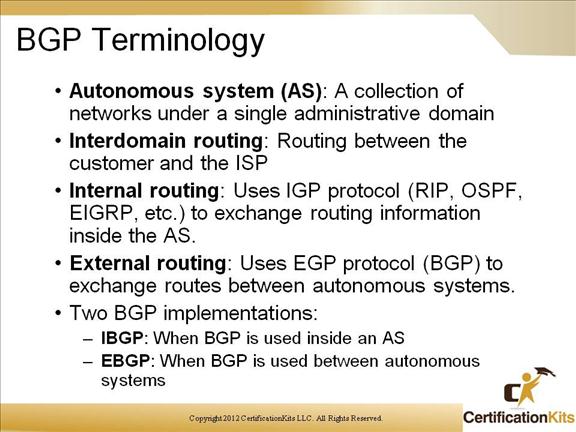
BGP is a very powerful routing protocol. BGP terminology is listed on the slide above
Cisco CCNP ROUTE Multihoming Options
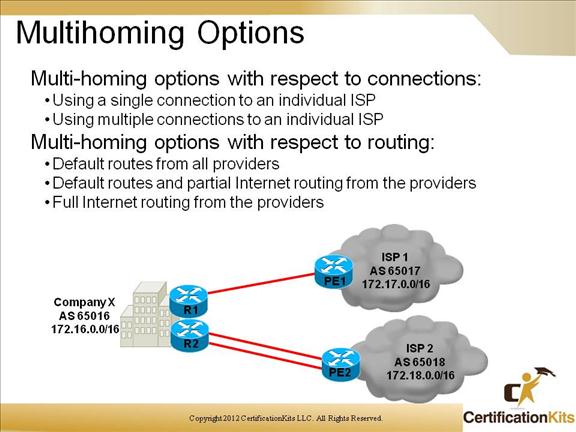
As previously described, an organization can be multi-homed to either a single ISP or multiple ISPs. Multi-homing while more complex has advantages such as redundancy and load sharing.
Cisco CCNP ROUTE Autonomous System
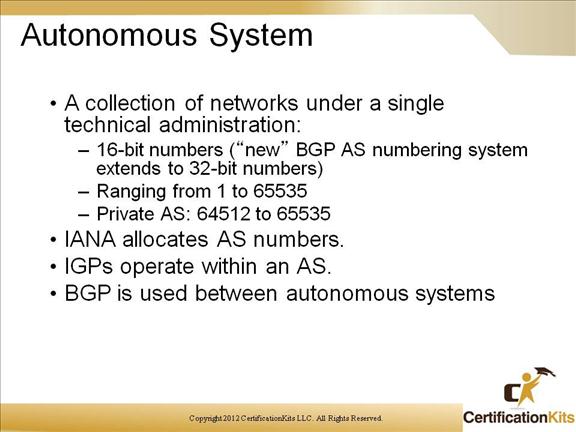
An Autonomous System (AS) is a collection of networks under a single administrative domain. Inter Gateway Routing Protocols (IGPs) operate within an AS while Exterior Gateway Routing Protocols (EGPs), for example BGP, are used between ASs.
Cisco CCNP ROUTE BGP Protocol Basics
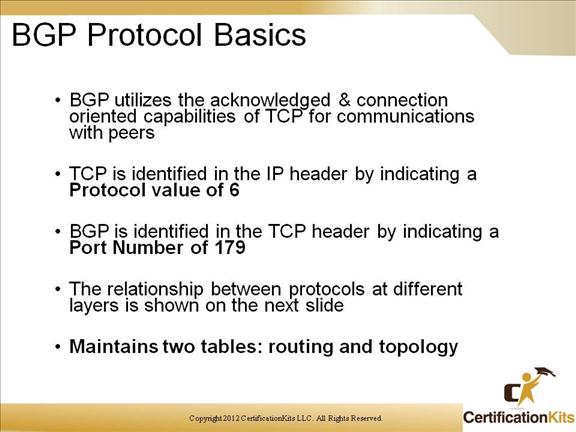
BGP uses triggered updates which are grouped by attribute – batches of routes with identical attributes are sent during an update. BGP updates are rate-limited to occur no more than every 5 seconds for IBGP and 30 seconds for EBGP. Convergence is slow in BGP , great emphasis is placed upon ensuring a stable environment. BGP has a number of specialized message types and corresponding packet formats
Open (1) : First Message sent after session establishment, Identify each other and agree on parameters
Update (2): Advertisement or withdrawal of prefixes
Notification (3): Used to signal the presence of an error
Keepalive (4): Confirms active connection
